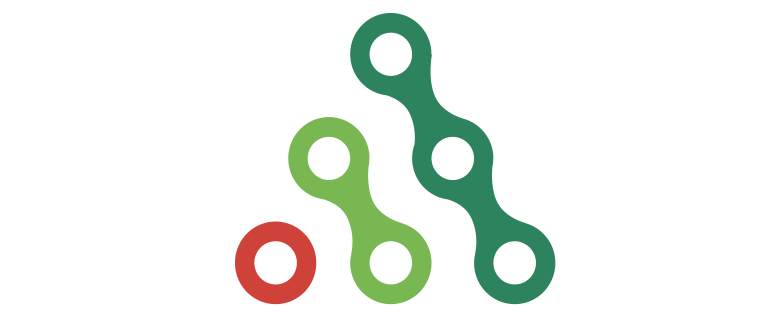Statistics
Statistics
Prevention programs for people who inject drugs (PWID)
In 2023, 42 NGOs, 22 mobile ambulatories and 18 mobile teams implemented programs for prevention of HIV, STIs and TB among PWID. The clients received sterile injection equipment, condoms and alcohol wipes, counseling, assisted testing for HIV, hepatitis B and C and syphilis, as well as early TB detection services.
During the period under report, projects funded by the Global Fund and PEPFAR have provided a minimum package of services (a syringe or a needle, a condom, and a counseling session) to 11,738 PWID and assisted rapid testing for HIV with results to 83,157 PWID. In 2023, 4,557 PWID were tested positive for HIV, and 3,660 were referred and went to healthcare facilities. 2,490 PWID got their positive testing result confirmed (newly-detected cases), and 3,677 PWID started receiving ART (including those who had got tested/confirmed the testing result in the previous period).
Prevention programs for sex workers (SWs)
In 2023, 29 NGOs implemented HIV and STI prevention programs among SWs. The clients received condoms, counseling, assisted testing for HIV, hepatitis B and C and syphilis, as well as early TB detection services.
Projects funded by the Global Fund have provided a minimum package of services (a condom and a counseling session) to 4,246 sex workers and assisted rapid testing for HIV with results to 7,688 SWs. In 2023, 401 SWs were tested positive for HIV, and 197 were referred and went to healthcare facilities. 62 SWs got their positive testing result confirmed (newly-detected cases), and 131 SWs started receiving ART (including those who had got tested/confirmed the testing result in the previous period).
Prevention programs for men who have sex with men (MSM)
In 2023, 30 NGOs implemented HIV and STI prevention programs among MSM. The clients received condoms, lubricants, counseling, assisted testing for HIV, hepatitis B and C and syphilis, as well as early TB detection services.
Projects funded by the Global Fund and USAID have provided a minimum package of services (a condom and a counseling session) to 9,307 MSM and assisted rapid testing for HIV with results to 15,292 MSM. In 2023, 128 MSM were tested positive for HIV, and 106 were referred and went to healthcare facilities. 74 MSM got their positive testing result confirmed (newly-detected cases), and 95 MSM started receiving ART (including those who had got tested/confirmed the testing result in the previous period).
Prevention programs for trans*people
In 2022, 11 NGOs implemented HIV and STI prevention programs among trans*people. The clients received condoms, lubricants, counseling, assisted testing for HIV, hepatitis B and C and syphilis, as well as early TB detection services.
Projects funded by the Global Fund and USAID have provided a minimum package of services (a condom and a counseling session) to 4,492 trans*people and assisted rapid testing for HIV with results to 4,223 trans*people. 13 trans*people got tested positive, 13 trans*people were referred and went to healthcare facilities, 12 got their positive testing results confirmed, and 13 began receiving ART.
HIV infection studies among key populations conducted in 2023
- Assessment of needs of HIV case finding service providers in Ukraine
In June-July 2023, the APH conducted a study to identify the needs of HIV case finding service providers related to effective provision of the services to key population during the full-scale war of russia against Ukraine (exemplified by OCF and MCF projects financed by CDC). Using the mix-method approach, 30 in-depth interviews were conducted with coordinators of project teams in the regions, as well as qualitative polling of 122 project specialists.
The main findings and recommendations include the need to pay more attention to organizational capacity building and human resources development, emotional burnout prevention and/or care (e.g., through training, providing regular vacations and salary raises), further efforts to establish collaboration with regional partners and organizations to ensure effective implementation of the project in the field, and strengthening the humanitarian component of the projects considering the time of war. Despite the geographic scope of work of the teams, they have significant experience of working in crisis that can be used as best practices of wartime service provision and be disseminated through experience sharing events. Further attention is required for development of recommendations and algorithms for work with servicemen and people with the signs of post-traumatic stress disorder, incl. referring them to providers of psychological or any other care.
Full results of the study are available at: https://aph.org.ua/wp-content/uploads/2023/10/Needs_report_2023.pdf
The study was a part of CDC-supported ‘Improving HIV Treatment Cascade for Key Populations through Differentiated Case Detection and Linkage to Care and Increased Capacity at the Center for Public Health and Strategic Information in Ukraine’ project.
- Women and war: risks of HIV infection in Ukraine
In August 2023, a nationwide survey of 1000 women aged 15 to 49 living on the government-controlled territories of Ukraine was conducted to identify the risks of HIV infection of the women and behaviors contributing to such risks, during the war of russia against Ukraine, with further provision of recommendations concerning HIV prevention, testing and case finding among the target populations. The survey was conducted using computer assisted telephone interview (CATI) method; the sample was a single stage simple one based on Random Digital Dialing (RDD).
According to the survey, as of August 2023, 11.0% of the women aged 15-49 on the government-controlled territories of Ukraine were internally displaced people (IDP) (including those who had returned to another location after having stayed abroad for some time), and 25.5% of them had no separate place to live. The income level of the women and their families has dropped substantially: presently, 31.9% of the respondents have low income, while as of February 24, 2022 they comprised only 10.5% of the sample. 53.1% of the women have received war-related experience: 46.0% have been to areas with a high risk of air raids, 21.6% have travelled across the areas of active fighting or close to them, 16.8% have been to combat areas, and 8.7% have experienced living under occupation. 83.2% of the respondents have experienced medical procedures and practices that can be linked to HIV infection risks. In particular, 56.6% of them received dental services, 55.4% took blood tests, and 51.5% were examined or treated by gynecologist.
The fact that HIV testing is free is known to 69.9% of the respondents, while zero cost of HIV treatment is known to 47.3%. Before February 24, 2022, 59.7% of the respondents had got tested for HIV, and most of those tests were related to pregnancy. 11.3% of the women took the test on a voluntary basis, while 38.3% did not get tested at all. After the start of the full-scale invasion, 19.1% of the respondents took an HIV test, with 28.2% of them doing it voluntarily, and 34.0% following a referral from a health worker in pregnancy-unrelated cases. Altogether 35.1% of the participants have taken an HIV test, and 35.1% have never got tested for HIV.
The two women who reported living with HIV are 0.2% of the sample. At the same time, 7.0% and 1.4% of the women assess their risk of being HIV-positive as medium or high respectively. 89.7% of the respondents have no experience of drug use. Most cases of drug use involve non-injected substances, with only two of the women (0.2%) reporting of having injected drugs (but they did it before the full-scale war began). A total of 92.3% of the respondents reported having the experience of sexual contacts, with 41.9% of them being girls aged 15 to 17. 36.9% of the respondents used condom during the most recent sexual contact, and 45.3% have never used condom since the beginning of the full-scale war.
Full results of the study are available at: https://aph.org.ua/wp-content/uploads/2023/11/Zvit-ZHinki-i-vijna_UA_01.01.2023.pdf
The study was a part of CDC-supported ‘Improving HIV Treatment Cascade for Key Populations through Differentiated Case Detection and Linkage to Care and Increased Capacity at the Center for Public Health and Strategic Information in Ukraine’ project.
- Mental Health among the Key Populations: the Needs and Availability of Relevant Services in the Wartime Ukraine
In July-August of 2023, a comprehensive study was conducted to identify the main ways and mechanisms for engaging PWID, SWs, MSM, and trans*people in receiving mental health services, and to provide recommendations on establishing collaboration between members of the communities, HIV-service NGOs and mental health service providers. In five cities of Ukraine (Dnipro, Kyiv, Lviv, Mykolaiv, Kharkiv), 105 in-depth interviews were conducted with PWID, SWs, MSM, trans*people, personnel of HIV-service NGOs, family doctors and providers of specialized mental health services. Also, a desk review was conducted to assess the availability of services in the regions included in the study.
The study found that most psychological problems and disorders developing in members of the key populations (KPs), particularly during the war, are not specific and are typical for the general population. Therefore, a significant part of the needs in services can be met by the providers working with the general public or the populations KP members may also belong to (such as survivors of gender-based violence or IDP). Such services are widely available, though this availability is still insufficient considering the scale of the war-induced problems. The priority measure to improve mental health of KP members is psychoeducation, i.e. raising their awareness about mental health, manifestations of disorders and symptoms that indicate that the person should seek professional care, and about available services. Considering high levels of development and capacity of HIV-service NGOs in Ukraine, their experience of work with the KPs, low access threshold and the preference the KPs give them, it is rational to support sustainability and scaling up mental health services through such organizations.
The optimal model of mental health service provision to the KPs should meet several universal requirements: (1) maximum convenience for patients/clients; (2) providing screening of the problem, initial diagnosis of disorders and assessment of possibility of providing care at the place of visit or the necessity of referral; (3) soonest possible initiation of service provision and, in case of a referral, a determined patient’/client’s pathway with feedback; (4) priority of the access to care for emergency and life-threatening conditions (high risk of auto- and heteroaggression, overdosing, withdrawal, severe consequences of violence, etc.); (5) provision of the services in the places most frequently visited by patients/clients; (6) the fullest meeting of the needs at the place of initial visit (minimizing the number of referrals).
Full results of the study are available at: https://aph.org.ua/wp-content/uploads/2024/01/Mental-Health_Report_Ukr.pdf
The study was a part of CDC-supported ‘Improving HIV Treatment Cascade for Key Populations through Differentiated Case Detection and Linkage to Care and Increased Capacity at the Center for Public Health and Strategic Information in Ukraine’ project.

 Statistics 2001-2023
Statistics 2001-2023